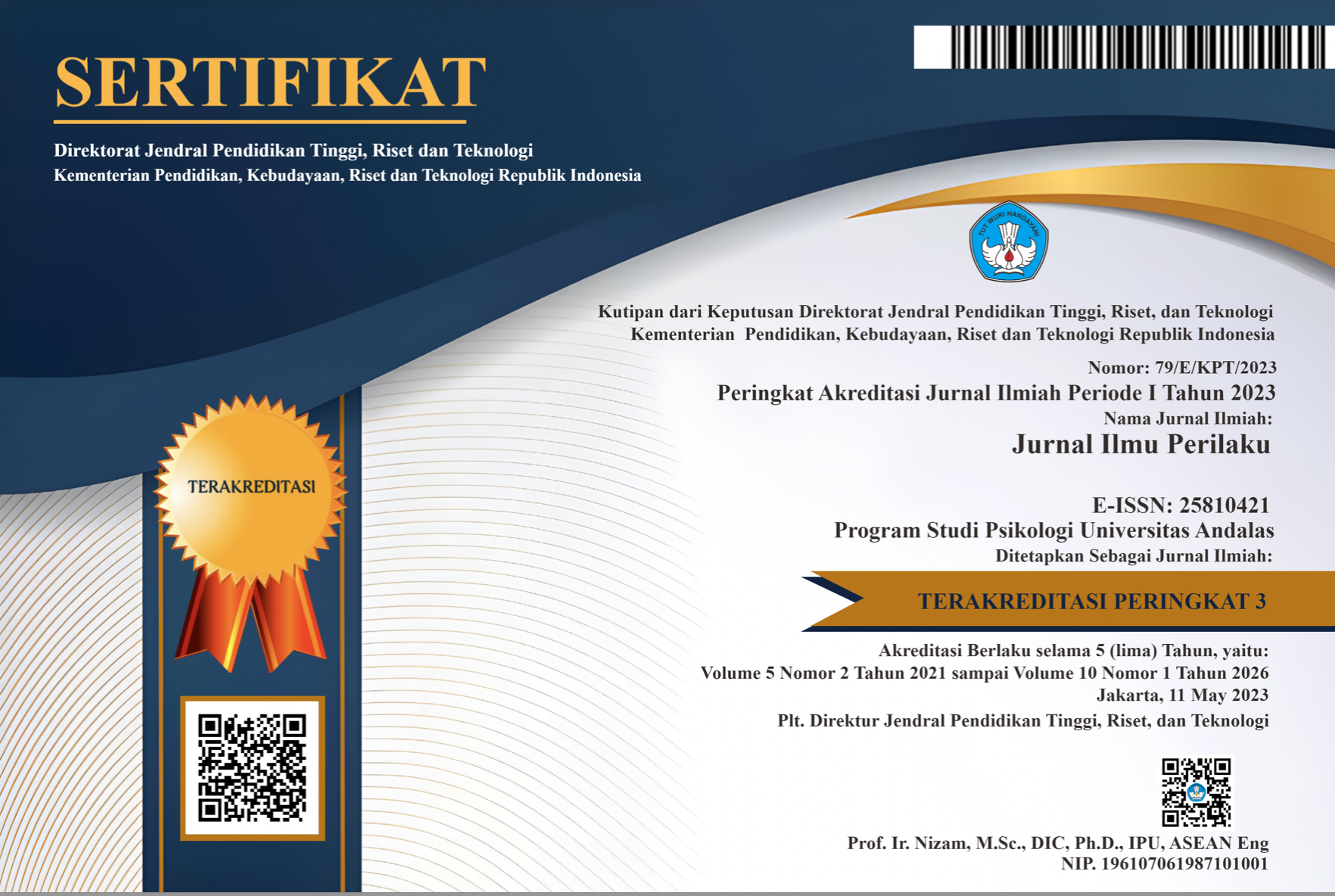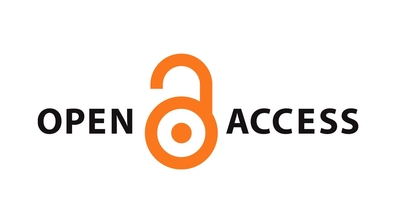Pembelian Kompulsif Ditinjau dari Kontrol Diri Guru Sekolah Dasar
Abstract
The purpose this research to view negative correlation between self-control and compulsive buying of teacher at State Elementary School (SDN) in Kab. Tangerang. This research was conducted at SDN A, B, and C in Kab. Tangerang and use technique total population sampling, mean all of teachers in SDN A, B, and C as population this research is 46 teachers. Method use this research is quantitative with correlation test pearson products moments. Pearson products moments used for view negative correlation between self-control with compulsive buying of teacher at State Elementary School (SDN) A, B, and C in Kab. Tangerang. This research use compulsive buying scale adaptation from Faber & O’Guinn (1992) α = 0.870 and self-control scale adaptation from Tangney, Baumeister, & Boone (2004) α = 0.890. Result correlation test indicated negative correlation between self-control and compulsive buying of teacher at State Elementary School (SDN) in Kab. Tangerang.
Downloads
References
Anshari (24 November 2015). Revolusi mental guru. Diakses http://makassar.tribunnews.com/2015/11/24/revolusi-mental-guru tanggal 27 November 2016.
Benson, H.M.D. (2000). Dasar-dasar respon relaksasi : bagaimana menggabungkan respon relaksasi dengan keyakinan pribadi anda (terjemahan). Bandung: Mizan.
DeRidder, T., Lensvelt-Mulders, G., Finkenauer, C., Stok, F. M., & Baumeister, R. F. (2011). Taking stock of self-control: A meta analysis of how trait self-control relates to a wide range of behaviors. Personality and Social Psychology Review, 1-24.
Dittmar, H. (2005). Compulsive buying – a growing concern? An examination of gender, age, and endorseement of materialistic values as predictors,British Journal of Psychology, 96, 467-491.
Faber, R.J., & Christenson, G. A. (1996). In the mood to buy: Differences in the mood states experienced by compulsive buyers and other consumers. Psychology & Marketing, 13(8), 803–819.
Faber, R. J., & O’Guinn, T. C. (1989). Classifying compulsive consumers: advances in the development of a diagnostic tool. Advances in Consumer Research, 16(1), 738–744.
Ghufron, M.N & Risnawati, R. (2011). Teori-teori psikologi. Jogyakarta: ArRuzz Media.
Goleman, D. (2005). Emotional intelligence. Jakarta: Gramedia.
Gunawan, Adi, P,. (21 April 2014). Memahami Emosi. Diakses dari Http://adigunawan.com/articles/memahami-emosi tanggal 10 Juni 2016
Hartston, R., & Pyla, P. S. (2012, Mei 8). The wheel: A lifecycle template. The UX book: Process and guidelines for ensuring a quality user experience. Diunduh dari https://medium.com/the-ux-book-hartson-pyla-review/2f505ba01472 tanggal 10 Mei 2016.
Hassay, D.N. & Marcolm,C.S. (1996). Compulsive buying: An examination of the consumption motive. Psychology & Marketing, 13 (8), 741 – 756.
Kurniawan, Floretine Yovita dan Gede Suparna. (2012). Peran kepemilikan kartu kredit dalam memoderasi pengaruh kontrol diri dan atmosfer gerai terhadap perilaku belanja kompulsif konsumen pakaian di Kuta. Jurnal Ekonomi. 1685 -1699.
Naomi, P. & Iin, M. (2008). Pengaruh kontrol diri terhadap perilaku pembelian kompulsif. Telaah Bisnis. Vol. 9, 179-193.
Neuner, M., Raab, R., & Reisch, L.a (2005). Compulsive buying in maturing konsumer Societies: An emirical re-inquiry. Journal of Economic Psychology. 26, 509 – 522.
Park, J. H. & Burns, D. (2005). Fashion orientation, credit card use, and compulsive buying: A phenomenological exploration. Journal of Consumer Marketing, 22(3), 135-141.
Phau, I. & Woo, Charise. (2008). Understannding compulsive buying tendencs pamong young Australians: The roles of money attitude and credit card usage. Journal Marketing Intelligences & Planning. Vol. 26 (5) 441 – 458.
Rindfleisch,. Burroughs,. & Denton. (1997). Family structure, materialism and compulsive consumption. Journal of Consumer Research, 23, 312-325
Roberts, J.A. (1998), Compulsive buying among college students : An investigation of its antesedents, consequences, and implications for public policy. The Journal of Consumer Affairs, 32 (2), 295-319.
Robert, J.A. & Jones, E. (2001). Money attitudes, credit card use, and compulsive buying among American college students, The Journal of Consumer Affairs. 35(21): 45-58.
Rothbaum, F., Weisz, J. R., & Snyder, S. S. (1982). Changing the world and changing the self: A two-process model of perceived control. Journal of Personality and Social Psychology, 42(1), 5-37.
Tajiri, H. (2012). Model konseling kognitif-perilaku untuk meningkatkan kemampuan kontrol diri perilaku seksual remaja. (Disertasi yang tidak diterbitkan) Universitas Pendidikan Indonesia, Bandung.
Tangney, June, P., Baumeister, Roy, F., Boone, Angie, Lusio. (2004). High self-control predicts good adjustment, less pathology, better grades, and interpersonal success. Journal of Personality, 72, 2, 272-320.
Workman, L., & Paper, D. (2010). Compulsive buying: Theoretical framework. 2010.The Journal of Business Inquiry, 9 (1) 89-126.

This work is licensed under a Creative Commons Attribution-NonCommercial-ShareAlike 4.0 International License.
The non-commercial use of the article is governed by the Creative Commons Attribution license as currently displayed on Creative Commons Attribution-NonCommercial-ShareAlike 4.0 International License.
JIP's spirit is to disseminate articles published are as free as possible. Under the Creative Commons license, JIP permits users to copy, distribute, display, and perform the work for non-commercial purposes only. Users will also need to attribute authors and JIP on distributing works in the journal.
Please find the rights and licenses in Jurnal Ilmu Perilaku (JIP).
- License
The non-commercial use of the article will be governed by the Creative Commons Attribution license as currently displayed on Creative Commons Attribution-NonCommercial-ShareAlike 4.0 International License.
- Author’s Warranties
The author warrants that the article is original, written by stated author(s), has not been published before, contains no unlawful statements, does not infringe the rights of others, is subject to copyright that is vested exclusively in the author and free of any third party rights, and that any necessary written permissions to quote from other sources have been obtained by the author(s).
- User Rights
JIP's spirit is to disseminate articles published are as free as possible. Under the Creative Commons license, JIP permits users to copy, distribute, display, and perform the work for non-commercial purposes only. Users will also need to attribute authors and JIP on distributing works in the journal.
- Rights of Authors
Authors retain the following rights:
- Copyright, and other proprietary rights relating to the article, such as patent rights,
- The right to use the substance of the article in future own works, including lectures and books,
- The right to reproduce the article for own purposes, provided the copies are not offered for sale,
- The right to self-archive the article.
- Co-Authorship
If the article was jointly prepared by other authors, the signatory of this form warrants that he/she has been authorized by all co-authors to sign this agreement on their behalf, and agrees to inform his/her co-authors of the terms of this agreement.
- Termination
This agreement can be terminated by the author or JIP upon two months’ notice where the other party has materially breached this agreement and failed to remedy such breach within a month of being given the terminating party’s notice requesting such breach to be remedied. No breach or violation of this agreement will cause this agreement or any license granted in it to terminate automatically or affect the definition of JIP.
- Royalties
This agreement entitles the author to no royalties or other fees. To such extent as legally permissible, the author waives his or her right to collect royalties relative to the article in respect of any use of the article by JIP or its sublicensee.
- Miscellaneous
JIP will publish the article (or have it published) in the journal if the article’s editorial process is successfully completed and JIP or its sublicensee has become obligated to have the article published. JIP may conform the article to a style of punctuation, spelling, capitalization, referencing and usage that it deems appropriate. The author acknowledges that the article may be published so that it will be publicly accessible and such access will be free of charge for the readers.










